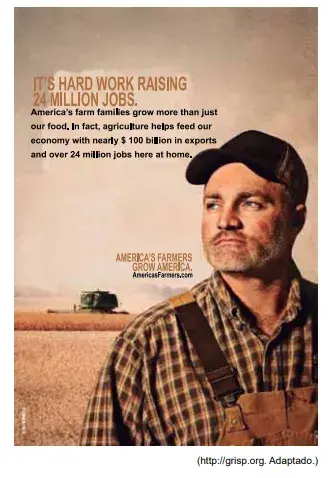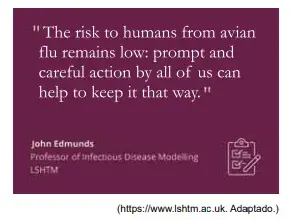FMJ 2024:
Leia o texto para responder às questões de 41 a 45.
In almost every discipline, success comes from a combination of talent and determination. But if you listen to most famous figures describe their life journeys, you’ll soon hear them exaggerating their hard work, while strangely diminishing the role of their innate abilities.
Thomas Edison may be the most often quoted, with his claim that “genius is one percent inspiration and ninety-nine percent perspiration”, but many other variations exist. Just consider Octavia Butler’s advice for new writers. “Forget talent. If you have it, fine. Use it. If you don’t have it, it doesn’t matter. As habit is more reliable than inspiration, continued learning is more reliable than talent.” The Portuguese footballer Cristiano Ronaldo also emphasises the blood, sweat and tears that went into his training. “Talent without work is nothing,” he said, when asked about the secrets of his success.

Such narratives may be beneficial for celebrated figures who wish to appear humble and wise. But recent psychological research shows overemphasising the importance of hard work would be prejudicial in many professional situations — thanks to a phenomenon known as the “naturalness bias”.
These studies suggest people have greater respect for those with an innate gift than for those who have had to strive for their success.
In consumer psychology, the term “naturalness bias” is often used to describe our preference for natural over synthetic goods. “On some fundamental level, we believe that the closer something is to its original state, the less adulterated it is, the more desirable it is,” declared Malcolm Gladwell, the author of a study on the topic. As says Chia-Jung Tsay, a professor at University College London School, “The naturalness bias is very generalizable across domains, ages and cultures.”
(David Robson. www.bbc.com, 22.05.2023. Adaptado.)
41. (FMJ 2024) No trecho do primeiro parágrafo “you’ll soon hear them exaggerating their hard work, while strangely diminishing the role of their innate abilities”, a palavra sublinhada indica
- uma relação temporal.
- uma explicação.
- uma restrição.
- uma causa.
- um contraste.
42. (FMJ 2024) In the second paragraph, the quotes from famous figures unanimously argue for the idea that
- highly gifted people can be found in almost every field of activity.
- daily practice is the key to success, in people’s both private and professional lives.
- good advice from good people helps the young fight for their dreams.
- success comes only for people with experience at what they do.
- talent may be irrelevant if not followed by hard work.
43. (FMJ 2024) No trecho do segundo parágrafo “As habit is more reliable than inspiration”, a palavra sublinhada significa, no contexto,
- confiável.
- perceptível.
- defensável.
- imprescindível.
- desejável.
44. (FMJ 2024) O termo “naturalness bias” é definido no terceiro parágrafo como
- o preconceito contra pessoas famosas que tentam parecer ao mesmo tempo humildes e sábias.
- a ênfase excessiva atribuída ao papel do trabalho árduo para a conquista de objetivos profissionais.
- a tendência à exaltação do sucesso em qualquer situação profissional.
- a predisposição ao enaltecimento de talentos inatos em detrimento da valorização do empenho.
- um fenômeno universal que atinge em especial pessoas famosas bem sucedidas.
45. (FMJ 2024) In the context of the fourth paragraph, the underlined term in “‘On some fundamental level, we believe that the closer something is to its original state, the less adulterated it is, the more desirable it is’” refers to
- the writer and readers of the text.
- consumers who prefer synthetic goods.
- consumers in general.
- consumers’ preference for natural goods.
- researchers in consumer psychology.
46. (FMJ 2024) Read the ad from America’s Farmers, an association which supports the work of American farming families.

In the ad, “hard work” refers to
- the cooperation between farmers and the government to raise new jobs.
- farm families’ efforts which help boost American economy.
- the struggles of American farmers to survive.
- the impact of food production on job and export numbers.
- the role of subsistence agriculture in building a country.
Leia o texto para responder às questões de 47 a 50.
If you want to know how the world is preparing for the next global pandemic, consider Rolaing, a Cambodian village on the Mekong River. For a few days in February 2023 this isolated spot became the center of public-health activity after an 11-year-old girl died of H5N1, the most virulent species of avian flu. It was Cambodia’s first fatality from the disease since 2014.
A rapid response team of health workers from the region was dispatched to the village. These health workers found a community of almost 2,000 people living side by side with their livestock and chickens. In just 24 hours they set up a temporary testing center, identified a dozen of the girl’s closest contacts, collected saliva and examined the samples for the pathogen.
The speed with which Cambodia, and other countries where novel viruses are known to emerge, can identify and react to future virus threats will determine how effectively the world can contain the next pandemic. There is a global community of experts constantly on high alert, even when threat levels subside. This time around, experts are focused on planning actions in case of any outbreak that puts human health at risk.
(Michelle Cortez and Suzi Ring. Bloomberg Businessweek, 08.05.2023. Adaptado.)
47. (FMJ 2024) The text
- narrates the story of an 11-year-old Cambodian girl who died from avian flu.
- describes the vulnerability of the Cambodian population to virus infections.
- presents the impacts of avian flu on livestock and chickens in Cambodia.
- enumerates preventive actions to extinguish the presence of the viruses in Cambodia.
- stresses the need of countries being persistently vigilant against avian flu threats.
48. (FMJ 2024) De acordo com o primeiro e o segundo parágrafos, o vilarejo cambojano de Rolaing
- representa a iminente ameaça de uma nova epidemia global.
- foi isolado depois da morte de uma menina de 11 anos pela gripe aviária.
- tornou-se foco de atenção, pois profissionais da saúde contraíram o vírus H5N1.
- registrou recentemente a primeira morte no país por H5N1 em uma década.
- criou um centro de pesquisa para investigação sobre novas epidemias.
49. (FMJ 2024) In the excerpt from the third paragraph “even when threat levels subside”, the underlined term can be replaced, without meaning change, by
- emerge.
- diminish.
- disappear.
- persist.
- increase.
50. (FMJ 2024) Leia a figura e compare-a ao conteúdo do terceiro parágrafo do texto.

A respeito da gripe aviária, tanto o terceiro parágrafo do texto quanto a figura mencionam
- a prontidão desejada para conter a doença.
- o papel da prevenção no controle de epidemias.
- o fato de qualquer pessoa poder contribuir para a solução do problema.
- as ações coletivas que têm mantido a contaminação pela doença controlada.
- os riscos para a saúde decorrentes da contaminação pela doença.